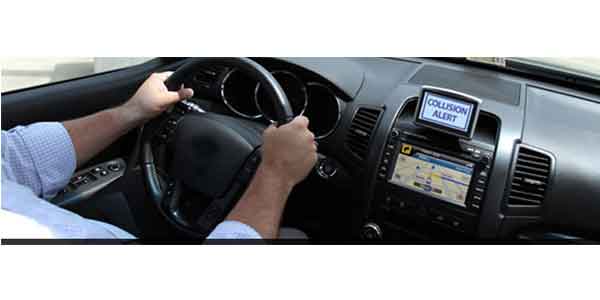It could be a huge opportunity for the aftermarket in coming years. But vehicle to vehicle (V2V) communication has hit a speed bump, with some industry members voicing opposition to the technology, said Automotive News.
As of December, it seemed that V2V technology was about to start hitting the road. The Obama administration proposed a rule that would require all vehicles to include a V2V box within four years.
But since then, the Fed has received over 400 comments during the required public comment period on its ruling (the comment period ended last week). Automotive News reported that not all car makers were on board. And it remains unclear what position the Trump administration will take on V2V deployment.
GM just began offering V2V in its 2017 Cadillac CTS. And more than $1 billion has already been spent to developing a V2V system over the last 10 to 19 years (depending on who you ask).
But Tesla said NHTSA should simply offer guidance to the industry rather than a mandate requiring V2V. It also said the current standard is too vague to fully protect the privacy of V2V messages.
And BMW said that cellular might be a better platform for V2V than the proposed Dedicated Short Range Communication (DSRC) platform, which works over dedicated WiFi spectrum at 5.9 GHz.
Under V2V cars continually communicate with each other 10 times per second. A driver can be alerted to a car stopped in the road around a bend or to a car posing a threat as it enters an intersection. The system could prevent 80 percent of crashes involving unimpaired drivers, according to the DOT.
But 5G cellular might provide better information. Automotive News quoted Marc Scribner, of the Competitive Enterprise Institute saying, “You’re betting on something that at its core is 10-year-old technology that isn’t going to have much of a difference on safety for 20 years. By the time it’s effective it will be out of date by 30 years.”
Here’s what the aftermarket thinks. Brandmotion President and DOT consultant Jeff Varick agrees it’s not a done deal. “There is a lot of uncertainty, given the Trump administration’s position against regulation. Trump was just here in Michigan, visiting the newest connected vehicle testing ground, the American Center for Mobility in Ypsilanti. You could tell he was conflicted. He doesn’t like anything that looks like regulation, but on the other hand, all the pre-work on DSRC-based V2X systems, the governments pilots, etc. do provide a fairly shovel-ready large infrastructure project that could create a lot of jobs, and save lives. Hopefully we’ll know by fall.”
On the other hand, Keith Lehmann, formerly of Kenwood, who consults on automotive projects, said, “DSRC isn’t going anywhere; I expect that it will be the standard that automakers will follow once the NHTSA review process is complete.”
While many complain that DSRC is an old technology, cellular is not a good option as almost half the country has poor coverage, said Lehmann. So where in Japan and Europe you can get full strength cellular service in all urban centers and even much of the countryside, in the US DSRC is a necessary backup.
Analyst Roger Lanctot of Strategy Analytics says DSRC has a lot of shortcomings. It doesn’t lend itself to upgrading. It may not be able to perform well when there’s a lot of traffic using it at once. It’s vulnerable to interference. “In fact, there are so many shortcomings to DSRC that the ONLY way car companies will be convinced to adopt it is via a mandate. Meanwhile, consumers have no idea what it is or why they’d want it or should have to pay for it and finally, as the Automotive News article notes, NHTSA lacks an administrator to implement it.”
Lanctot adds, “And, yes, it is true that nearly $1B has been spent developing the technology – but what has been learned can be applied to 4.5G and 5G-based solutions.”
You can read the full Automotive News story here, but a subscription may be required.










No thanks, And this is from an out of work installer with a lifetime of background on mobile electronics spanning 4 decades.
Just lock the drunks up, and lose the key’s Put them to work making military parts in jail.
. and another scheme to suck money from out pockets is hatched..
just another government mandated pipe dream. won’t deploy. people don’t want it.
cannot see it working when five cars drive through a red stop light.
sames goes for self driving cars. people don’t want it- just tesla squirrels.